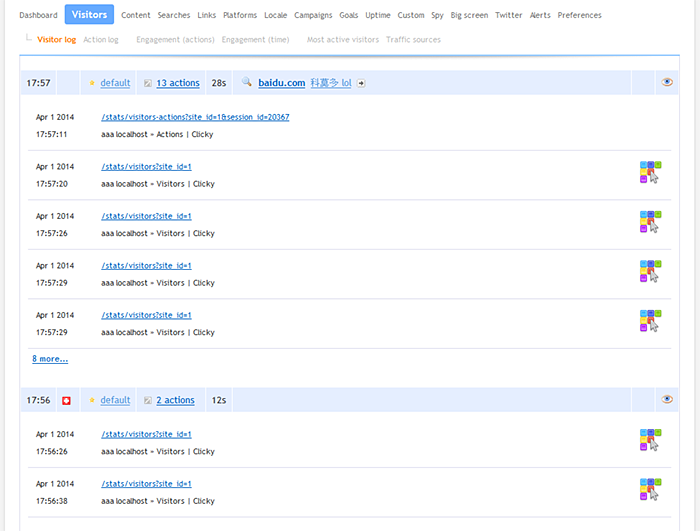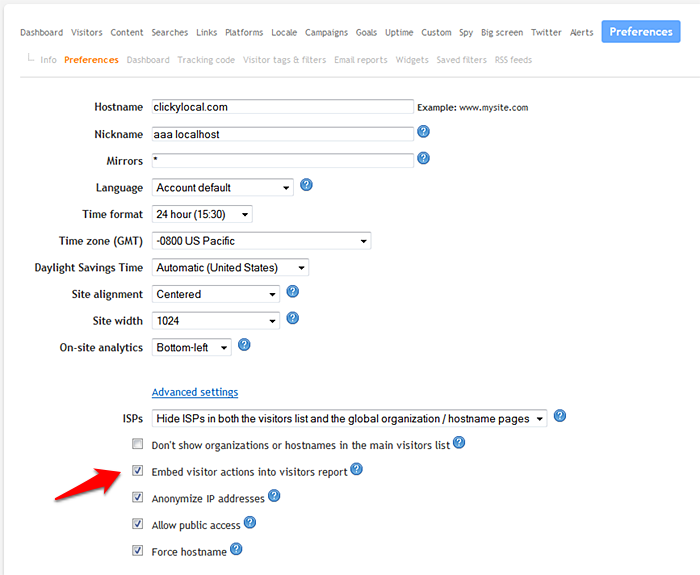HTML5 audio, embedded actions, tracking code verification, and better cookies
We wanted to let you all know about some of the bigger things we’ve been working on the last month that you may not have noticed. None of them felt major enough to warrant their own post, so we were waiting until we had a nice collection of goodies.
HTML5 audio, and automatic HTML5 video/audio tracking
We’ve had support for HTML5 video tracking for a while, it simply required adding an additional javascript file to your code. We just added the ability to track audio as well. We combined video and audio together into their own report, now called Media, since they are quite similar in terms of the metrics we track — and it’s unlikely that many sites would have a mix of both.
Even better, we made it so you no longer need to include the extra javascript file at all. When the tracking code detecst any video or audio elements on your web site, it will now automatically inject the other javascript file into your page so we can track the video and audio files without you having to do anything. Don’t worry, if you already had that file included manually, you don’t need to delete it. It will work either way.
Embedded actions in the visitors report
This new preference, disabled by default, adds some additional detail into the standard visitors report. Now you will no longer need to click through to see the actions (page views, etc) of each visitor. The first five actions will be displayed right beneath each visitor, with a link below them to see full session details if there are more than five actions.
Note that this will slow down the loading of the visitors report by a somewhat noticeable measure since we have to query for a lot more data, but, it’s pretty nice if that’s what you’re into.
Here’s what it looks like:

Here’s where you enable this new preference:

Tracking code verification
We released this feature a bit prematurely, not expecting too many people to notice it right away, but we got bombarded with emails immediately saying the verification doesn’t work! Whoops. There were a few bugs that we got quickly fixed.
This is a nice feature to check out if you think you got the code or a plugin installed but you’re not getting any stats. This will verify for you that the code is at least installed on the site. You can access this feature on your tracking code page:
![]()
Better cookies
The cookie system we have been using since October 2012 to authenticate yourself when you’re on your own web site (which then auto-ignores your visits and loads the on-site analytics widget)… was a bit less than ideal.
The biggest problem was that we used a single cookie for two different features (widget and auto-ignore). On top of that, the cookie was always set, and it would stay set (for a year) even if you clicked the logout button. The reason we wanted it to stay set was so that your visits would always be auto-ignored, but it was a bit of a security issue in terms of the same cookie being used to authenticate on-site analytics. The chances of anyone ever seeing anything via the widget that they shouldn’t have were microscopic (it would only happen on a shared machine and only if you logged into both Clicky and your web site, and someone after you looked at your history and also visited your web site), but that’s no excuse.
So, we’ve changed several things here. There are now two unique cookies for each feature: one for the widget and one for auto-ignore. When you logout, the widget cookie is deleted, but the auto-ignore cookie stays set so your own visits will continue to be ignored. Last, the expiration time of the widget cookie was shortened to 90 days (from 1 year previously).
That about wraps it up for now, but there’s plenty more in the pipeline!
Recent Comments